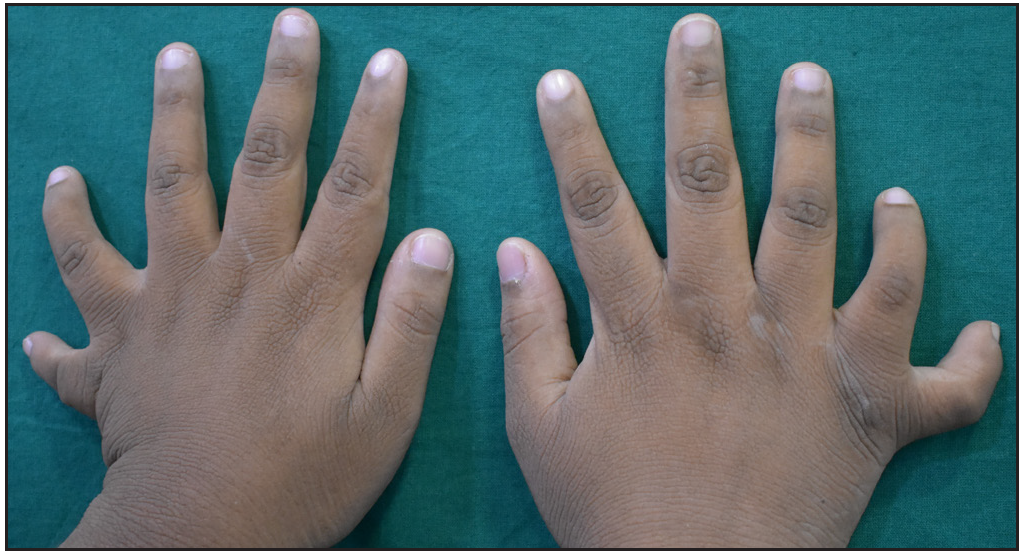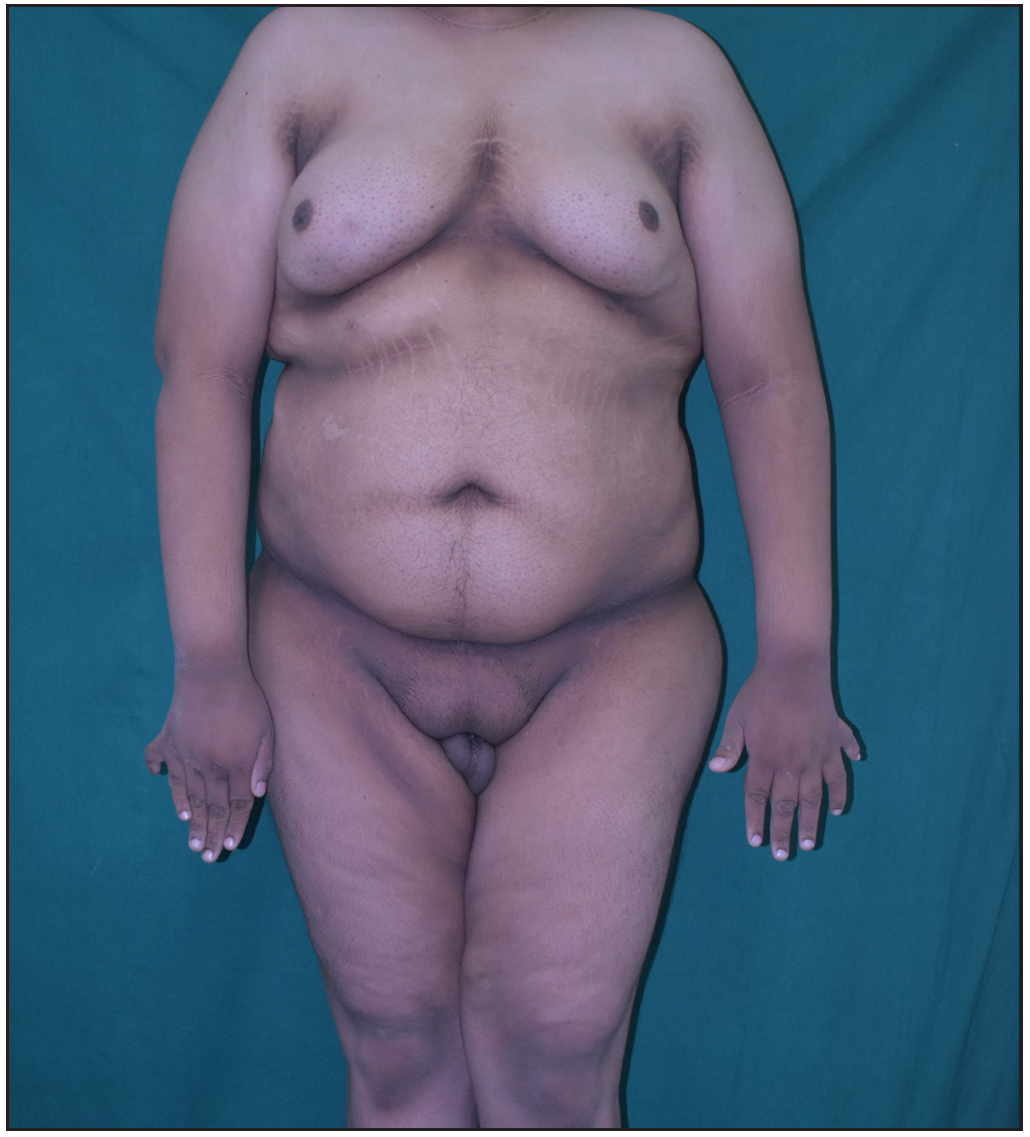Translate this page into:
Bardet Biedl syndrome- A rare case
Corresponding author: Dr. Aditi Shende, Department of Dermatology, HBTMC and R N Cooper Hospital, Vile Parle, Mumbai, India. draditishende@gmail.com
-
Received: ,
Accepted: ,
How to cite this article: Shende A, Rambhia K, Kapadia F. Bardet Biedl syndrome- A rare case. Indian J Dermatol Venereol Leprol. 2024;90:681. doi: 10.25259/IJDVL_668_2023
A 20-year-old obese male presented with a darkening of the skin over the neck, axillae, cheeks, and trunk. There was a history of second-degree consanguinity in parents. He was diagnosed with bilateral atypical retinitis pigmentosa and had a history of delayed milestones. On examination, he had acanthosis nigricans, deep-set eyes, hypertelorism, high-arched palate, post-axial polydactyly of all the limbs, gynaecomastia, and micropenis [Figures 1 and 2].

- Features of BBS- central obesity, polydactyly, micropenis, gynaecomastia, and acanthosis nigricans.

- Post axial polydactyly of hands.
Based on the above clinical findings, Bardet Biedl syndrome (BBS) was diagnosed. The parents were counseled and advised to have regular follow-ups to look for any renal abnormalities.
BBS is a pleiotropic non-motile ciliopathy. It is related to multiple defective genes called Bbsomes like BBS1, BBS2, ARL6/BBS3, BBS4, BBS5, BBS7, etc. BBS- protein, a gene product of these genes, plays a role in intra-flagellar transport. Diagnosis is mainly clinical; genetic confirmation is required when the clinical presentation is atypical.
Declaration of patient consent
The authors certify that they have obtained all appropriate patient consent.
Financial support and sponsorship
Nil.
Conflict of interest
There is no conflict of interest.
Use of Artificial Intelligence (AI)-Assisted Technology for manuscript preparation
The authors confirm that there was no use of Artificial Intelligence (AI)-Assisted Technology for assisting in the writing or editing of the manuscript and no images were manipulated using AI.





